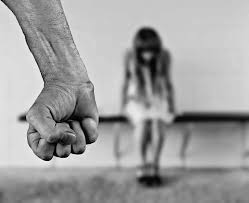The female body has always been exposed. An example of this is the countless daily news stories or comments that exist about: whether a woman has gained weight, promotion of miracle diets, bikini operations, treatments to correct imperfections, aesthetic interventions to fit into the “model” body… Well, all of this is aesthetic violence towards women.
What is aesthetic violence against women?
Aesthetic violence is any social pressure, which is imposed especially on women, to adapt to the aesthetic canons of the time. From childhood, we are taught that our physical appearance is very important and that it can be the key to both our success and our failure in life.
Growing up with these messages results in an endless process of self-demand that brings about both physical and psychological effects and generates damaged self-esteem.
The role of society in aesthetic violence
Society dictates what beauty is. Today, standards dictate that women should be thin, but not excessively so. Excessive thinness stopped being well-regarded after becoming fashionable in the 1990s leading many models to maintain their thinness through drugs, alcohol, and/or eating disorders.
The canons establish that women look young, remain attractive, with smooth skin, without hair… And all of this becomes a race against time to resemble as much as possible what is expected of us.
This is promoted by the mass media, the fashion industry, the music industry, pornography, and the cosmetics market, as “perfect” bodies. These bodies are nothing more than unreal bodies resulting from an idea of how a woman should be.
An element that is of great relevance is weight. Thinness constitutes an unavoidable condition of what the macho society defines as feminine beauty. We can say that the aesthetic canon is fatphobic. A society obsessed with being thin is a society obsessed with not being fat. The other side of the coin of normative thinness is fatphobia, both external (rejection of fat people) and internal (fear of gaining weight).
Why is it discrimination?
According to sociologist Esther Pineda, aesthetic violence is sexist because these demands only apply to women’s bodies. Examples of this can be found in Spanish proverbs: “Two tits are worth more than two carts” or “There are no ugly women, only sober men”.
They are also germophobic, they do not want to show any trace of maturity, aging, or deterioration, the skin should not have wrinkles or marks, gray hair should be dyed, etc. Any treatment is valid to erase the passage of time. In terms of age, the difference between men and women is clear: when they get older they become sexy mature men and we become unattractive old women.
The canon of beauty is racist, since, in Western culture at least, it has been built based on the whiteness of the skin. Non-white women (Arab, Asian, indigenous, black) are rendered invisible.
Educated in aesthetics
Women have been educated in aesthetics, what does this mean? We have learned since childhood how to hide our “complexes”, cover up imperfections, and undergo cosmetic procedures to increase or decrease some parts of our body. An endless number of strategies that continue to make us attractive. Strategies that cause enormous damage to our self-esteem.
The danger of aesthetic violence is that it endangers women’s health in their attempts to fit into the perfect body. In an attempt to “look good” and “fit in” with what is expected of them, they engage in many daily behaviors that can be harmful to their health.
Furthermore, all of this undermines the diversity of bodies. Women are diverse in our bodies and minds. We all can’t fit into the same suit. It is about being able to accept our body, understanding the pressure exerted by our society, and being able to be healthy and accept ourselves.
The beauty we are expected to achieve is artificial and causes great emotional and physical suffering. Aesthetics will be healthy when we do it for pleasure and not by imposition. Perhaps, it can be something complex to determine for some women. It is advisable to reflect on where these types of practices are carried out (makeup, hair removal, aesthetic interventions…) and establish a healthier relationship with aesthetics.
Read Also: The Brief History Of Jewish Clothing










